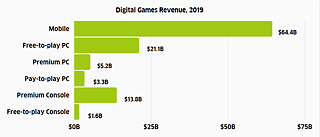Forging One's Own Path
Going Indie

Another substantial mix of the overwhelming repository of labels available to gamers today can be classified as Indie. Small developers have existed since forever, but they got the spotlight during the mid-2000´s. And that’s when the notion of independent game development started to surface and the industry started to explode.
By Shagun Shah
What’s making the gaming industry explode?
This incredible explosion of growth has been driven by a variety of factors like advancements in graphics rendering, cloud computing and computation hardware, huge leaps in penetration of mobiles and computers, increasing access to the internet, as well as the advent of Augmented Reality and Virtual Reality technology. As of 2020, the gaming industry is characterized by a variety of gaming genres that cater to an equally diverse population of gamers worldwide.

At the same time, the rise of esports has also created new opportunities for gamers and a renewed interest from investors, globally. Two notable examples of esports games are Riot Games’ League of Legends and Valve’s DotA 2, with global tournaments with prize pools worth millions of dollars!
Today, there are games that cater to all kinds of users, from beginners on free smartphone apps, to gamers playing immersive role-playing games on consoles and PCs, to professional multiplayer competitors. In fact, KPMG estimates an addition of 190 million gamers by 2021 in India alone!
Career Opportunities as an Indie
There has never been a better time than 2020 for aspiring developers to dip their feet in the industry. While the budgets, scope, and expectations of what constitutes a video game have increased, there has also been a strong and growing movement of independent or “indie” games.
AAA or Indie? The question is still a mystery. The AAA video games are those with the largest development budgets and the bulk expenditures on advertising and other promotional services. Indie Game, or an Independent video game, is often produced without the monetary support of a publisher and thus advocates complete creative autonomy for the developer.
For those more inclined to forge their own path, there are plenty of opportunities in the current ecosystem. With industry-standard tools like Unity and Unreal Engine adopting free-to-use models, it is possible for individuals and small teams to produce high-quality games on smaller budgets. However, in an indie setting, every individual will have to wear multiple hats as opposed to larger studios where roles would be more granular. This situation is ideal for those who are keen to experience the entire gamut of processes involved in a video game’s creation.
Some examples of iconic indie games include Stardew Valley, Papers Please, Celeste, and Braid. It is not to say that these games are of an inferior quality to big-budget (AAA) productions; instead, it would be better to say that indies are at the forefront of innovation, exploration, and expression of games as a medium. Perhaps the most iconic indie game of the 2000s is Minecraft, which saw enormous critical and financial success and spawned an entirely new genre of gaming.
While the availability of tools and access to knowledge has increased, there is still a considerable cost in time and money for an individual or a small team to make a video game that is of sufficient quality to publish and sell.
In emerging economies like India, the games industry is largely centered on the two pillars of development and art outsourcing, and live-operations for mobile freemium products. Given the nascency of the industry, it is commensurately harder for aspiring game developers in such environments to produce indie games for an extended period of time and to secure funding for the same. Similarly, it would be relatively easier for game developers in more established video game markets like Europe and the US, to find work in game studios as well as function as indie developers.
The following are a few tips for aspiring indies:
- It is best to measure the feasibility of building a game against the budget, the level of expertise required vs the capabilities of the team, and the time it will take to complete.
- Study trends in the market. Information on what one’s target demographic is playing, the platforms they’re playing it on, and their purchasing habits are all extremely valuable.
- Efficiency in design is key as an indie. Making a multiplayer game focused around a core experience, creating tools for user-generated content, or opting for procedurally generated content can dramatically increase a game’s lifespan while reducing time and effort on the developer’s part.
- Finding developers that share a very similar set of goals and motivations is a key to a successful collaboration. Working as a team reduces the chances of burnout and irons out idiosyncrasies in a game’s design.
- One of the great boons for indies has been the advent of crowdsourcing platforms like Kickstarter and Indiegogo, which enable direct engagement and sponsorship from fans and players. If the game concept strikes a chord with the community, then that can be a very powerful resource. Putting out free demos, engaging with streamers and fans on social media like Twitter, Discord, and Reddit are excellent ways to get traction for the game before release.
In conclusion, as the games industry booms, there are plenty of opportunities for indie developers to thrive, so long as one is mindful of the risks and pitfalls, and exercises prudence in their game development journey.
